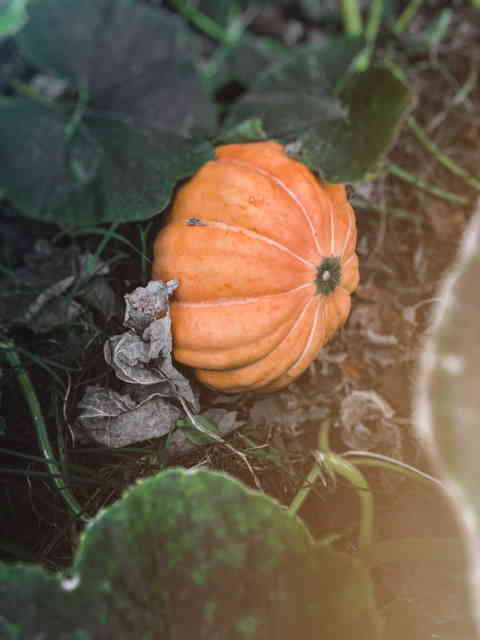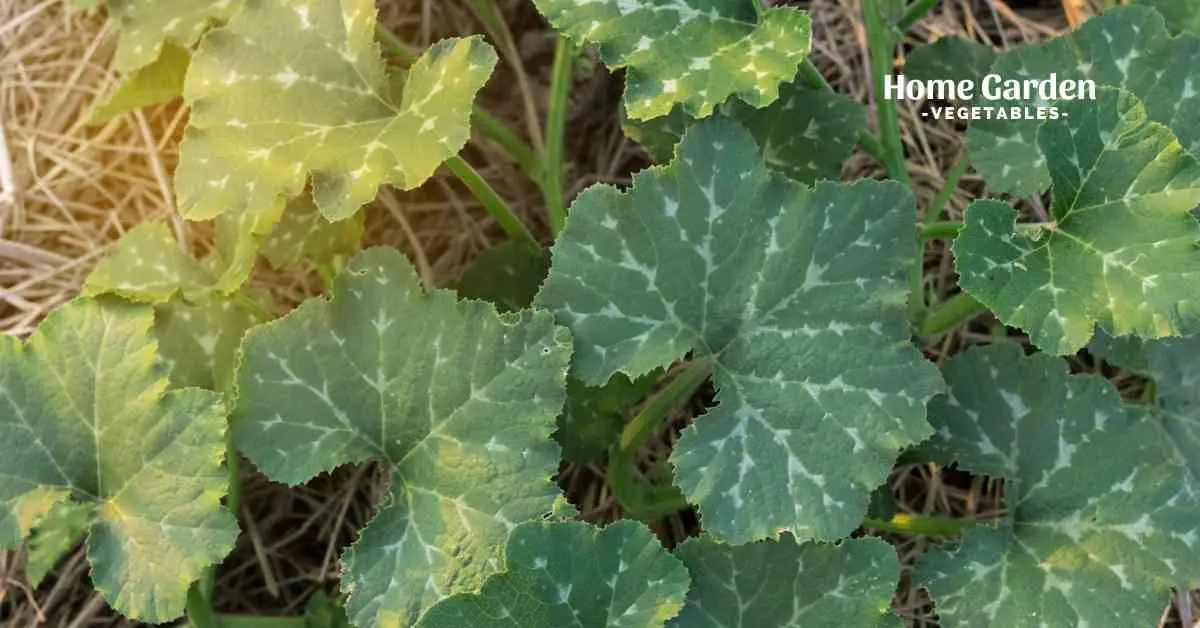Maybe your goal is to raise a gigantic pumpkin for the county fair. Alternatively, maybe you just want to carve a jack o’lantern for Halloween. No matter how you look at it, the white patches on your pumpkin’s leaves aren’t healthy for it.
Then why are your pumpkin’s leaves developing white spots? Your pumpkin’s white patches are most likely caused by powdery mildew, which is a fungus that lives on the leaves. Powdery mildew is a fungus that attacks a wide range of plants, including pumpkins. Leaving it untreated might cause your pumpkin’s development to slow down or possibly stop completely.
Reader Poll: What online courses would interest you?

Pumpkin Leaf Spots Turning White
This is a serious fungal disease that will kill your pumpkin plant as well as many other garden plants. Powdery mildew may be treated, but it can also be prevented from infecting your plants in the first place if you take the proper precautions.
Powdery Mildew Facts
Knowing what causes an illness is essential for both treating it and preventing it. So, what’s to blame for the pumpkin leaves’ white spots? Powdery mildew refers to a set of illnesses caused by the same fungus. It is brought on by a sickness that affects leaves regularly.
It doesn’t matter what plant a fungus lives on, the powdery white look on the leaves, flowers, and stalks are all the same. Infected pumpkin leaves have a fungus called Erysiphe cichoracearum. Citrus fruits and vegetables, such as lemons and lettuce, as well as flowers like dahlias and sunflowers are all affected.
Subscribe to our newsletter!
Microspores form in chains, which is why the dust has such a fine white powdery texture. Water is not required for the germination of these spores. Since they do best when the foliage is dry, they do best in warm temperatures. Every three to fourteen days, new spores are generated and disseminated to neighboring plants by the wind.
For powdery mildew to grow properly, it needs chilly, damp nights and dry days to thrive. As a result of the rapid temperature rise, the illness swiftly spreads.
Humid circumstances with a temperature range of 68 to 81 degrees Fahrenheit are also conducive to the growth of powdery mildew.
The powdery mildew spores will have an easier time growing if your plants are overcrowded. Reduce the spread of powdery mildew fungus in your garden or greenhouse by providing enough airflow throughout. Powdery mildew spores may spread more quickly if your garden is not adequately aired.
How to Get Rid of Powdery Mildew
The good news is that a small incidence of powdery mildew on pumpkins is not deadly. In other words, if you don’t get treatment, the condition will only become worse. The first sign of powdery mildew is the appearance of small, white patches. These spots spread slowly, and a badly afflicted pumpkin may have a lower yield, a shorter growth period, and bland-tasting pumpkins. Preparation is key before learning how to cure powdery mildew on pumpkins, so let’s get right in.
Fungi
Fungi begin to generate and release spores in the springtime. When they come into touch with a suitable host and the circumstances are right, they spread the disease to the plant. As the illness spreads, the white patches get larger and more numerous. As soon as the temperature rises over 60 degrees F (16 degrees C), the fungus begins to reproduce.
Other Factors
Even though most circumstances are not necessary for the germination of powdery mildew, excessive humidity is a factor. Increased spore production is facilitated by higher humidity levels. Powdery mildew thrives in humid environments with temperatures between 60 and 80 degrees Fahrenheit (15 and 26 degrees Celsius). It’s not necessary to remove diseased foliage if the mildew on the pumpkins seems to be modest. If the illness started as the plant was producing its pumpkins, the plant may have enough time to finish producing them. Powdery mildew will most likely recur if environmental circumstances are still suitable for its development.
Cucurbits
When it comes to this particular illness, cucurbits, like pumpkins, are particularly vulnerable. To minimize illness, place the plants in broad light, with plenty of air circulation, and with little fertilization. Use a fertilizer that releases slowly over time. However, they’ll probably need the use of fungicide. Fungicides may be classified as preventatives, eradicatives, or as eradicators and eradicators. These two oils are the greatest at eliminating pests, but they also have protective properties. They are neem oil and jojoba oil respectively. Use whatever horticultural oil brand you choose. Spraying should be avoided for at least two weeks after a sulfur spray and when temperatures are over 90 degrees Fahrenheit (32 C.).
Sulfur
Powdery mildew in pumpkins and other cucurbits has long been treated with sulfur, however, sulfur must be applied before the onset of disease signs. A week after an oil spray, avoid applying sulfur if it is at or over 90 degrees F (32 C). Finally, a biological fungicide (Serenade) includes helpful bacteria that eliminate fungus pathogens. It kills the powdery mildew pathogen and is safe for humans and pets, although it isn’t as effective as oil or sulfur.
Treating powdery mildew may be done in several ways. Organic approaches are the best since they work better than chemical ones. Be sure to generously spray the treatment solution on both sides of the leaves as well. If the product does not tell you otherwise, reapply the therapy every week.
Conclusion
Now you know what pumpkin leaves have white specks on them. This is due to fungus growing on plants, as previously stated. The fungus does best in damp, warm climates. Your pumpkin’s health is jeopardized by the presence of fungus; thus, prevention is preferable to cure.
Otherwise, if powdery mildew emerges on your plants, you may cure it and stop it from spreading. Powdery mildew on pumpkin leaves may be controlled using fungicides such as milk, baking soda, and other household items. Despite this, you should still make a point of checking on your plants often.

